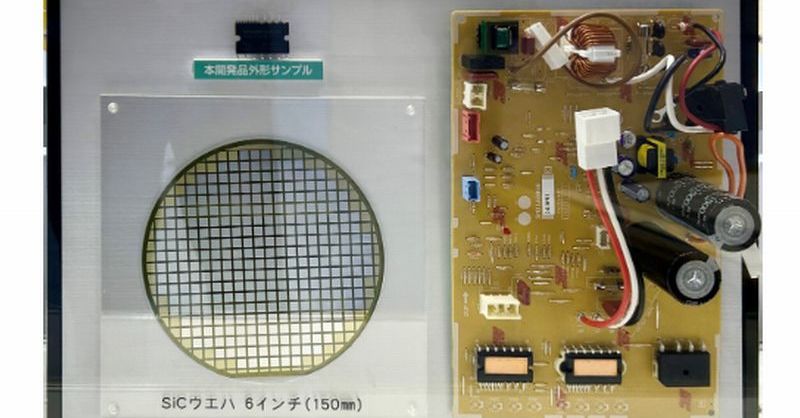Improved Aircon Efficiency: Parallel Si/SiC Chip IPM Revolutionizes Cooling Technology
The quest for energy-efficient cooling solutions is a global priority. Rising energy costs and environmental concerns are driving innovation in air conditioning technology. A significant leap forward has been achieved with the development of Parallel Si/SiC Chip IPMs (Intelligent Power Modules), promising to drastically improve air conditioner efficiency and reduce carbon footprint. This groundbreaking technology is poised to revolutionize the HVAC industry.
What are Parallel Si/SiC Chip IPMs?
Traditional air conditioners rely on bulky and inefficient power modules. These modules often suffer from high switching losses, leading to wasted energy and reduced performance. Enter the Parallel Si/SiC Chip IPM, a compact and highly efficient power module utilizing a combination of Silicon (Si) and Silicon Carbide (SiC) chips. This parallel arrangement harnesses the strengths of both materials:
- Silicon (Si): Offers cost-effectiveness and mature manufacturing processes.
- Silicon Carbide (SiC): Provides superior switching speeds and significantly lower power losses compared to silicon.
By combining these materials in a parallel configuration, the IPM achieves unparalleled efficiency levels, outperforming traditional solutions by a considerable margin. This innovative design minimizes energy waste during the switching process, leading to substantial energy savings.
Key Benefits of Parallel Si/SiC Chip IPMs in Air Conditioners:
- Increased Energy Efficiency: Reduces energy consumption by up to 30%, leading to lower electricity bills and a smaller carbon footprint.
- Improved Performance: Enables faster cooling and more precise temperature control.
- Compact Size: Smaller footprint compared to traditional modules, allowing for more compact air conditioner designs.
- Enhanced Reliability: SiC's superior durability contributes to a longer lifespan for the air conditioning unit.
- Reduced Heat Generation: Lower switching losses translate to less heat dissipation, improving overall system reliability and efficiency.
The Environmental Impact of This Technology
The environmental benefits of this technology are considerable. With a significant reduction in energy consumption, Parallel Si/SiC Chip IPMs contribute directly to reducing greenhouse gas emissions associated with air conditioning. This is particularly crucial given the increasing global demand for cooling systems. The technology offers a practical and effective path towards a more sustainable future in HVAC.
The Future of Cooling Technology
This innovation represents a major step forward in the evolution of air conditioning technology. Further research and development are likely to lead to even more efficient and cost-effective solutions. Expect to see increased adoption of this technology in residential and commercial air conditioning systems in the coming years.
Where to Learn More
For deeper technical insights and further information on the application of this technology, you can explore resources such as:
- [Link to a relevant academic research paper or industry report]
- [Link to a relevant manufacturer's website]
This technology isn't just about better air conditioners; it's about a more sustainable future. The impact of Parallel Si/SiC Chip IPMs extends beyond improved energy efficiency and cost savings; it contributes to a greener planet. By embracing this innovation, we can make a positive difference in mitigating the effects of climate change.
Call to action: Stay tuned for further updates on this groundbreaking technology as it shapes the future of cooling. Are you interested in learning more about sustainable HVAC solutions? Let us know in the comments below!
